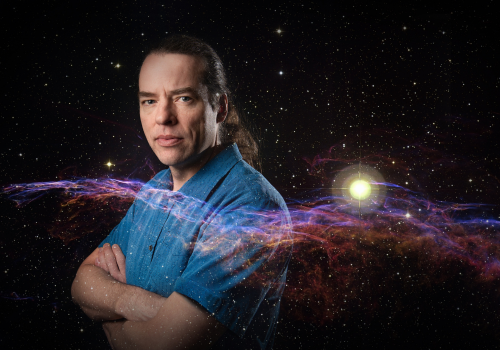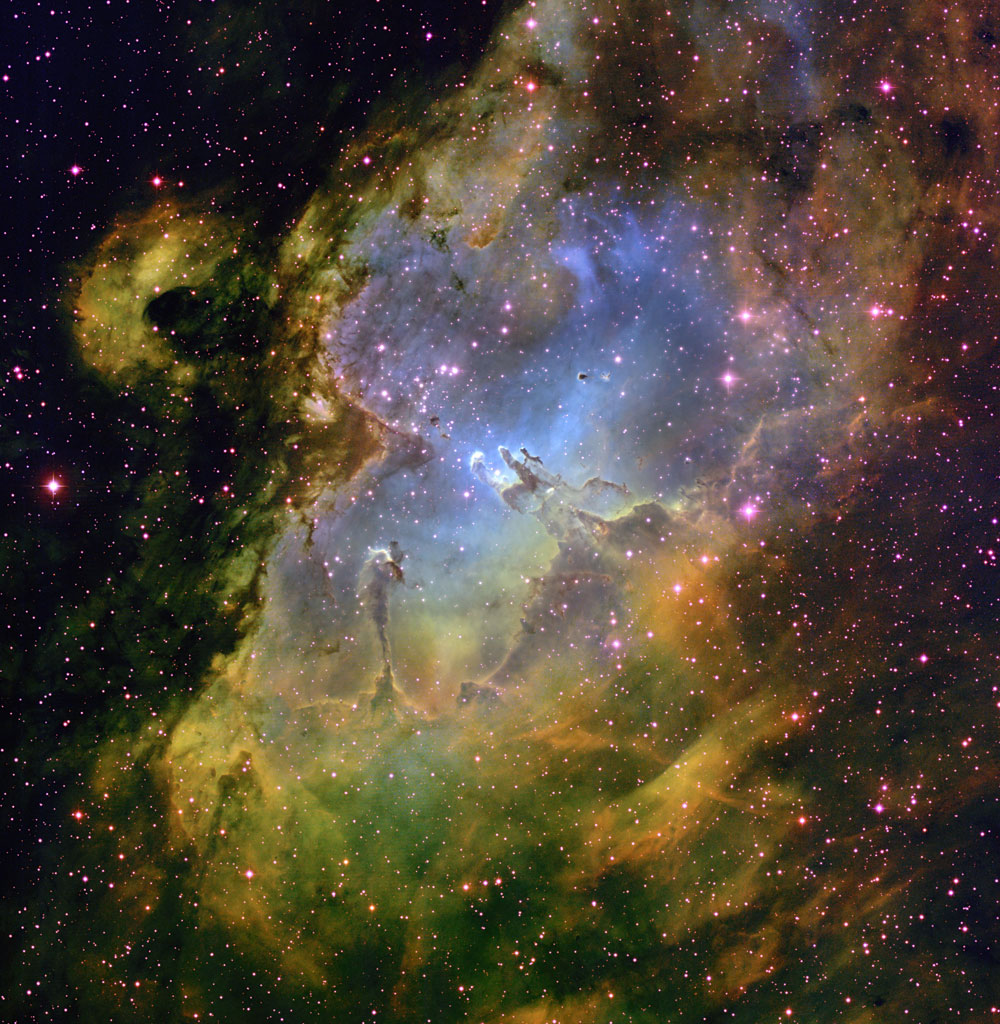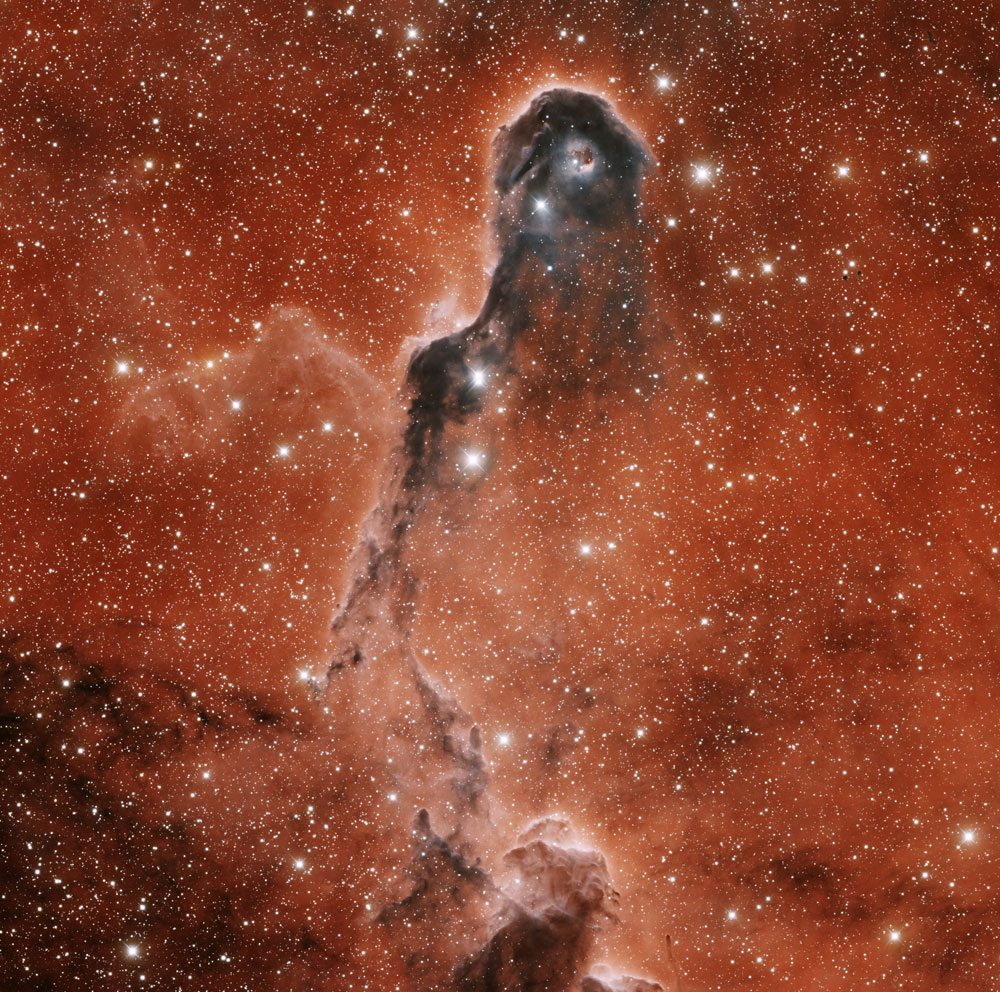Did you know UAA Professor Travis Rector's stunning images of stars and galaxies have appeared in books, galleries, National Geographic, and the New York Times?
June 25, 2024
Travis Rector, professor of astrophysics at the University of Alaska Anchorage (UAA), merges his research and education through his astrophotography, teaching and authorship. Through his work in and out of the classroom, he is empowering UAA students to explore cosmic frontiers, and fostering a legacy of scientific inquiry and environmental stewardship.
What is it?:
Astrophysics is the study of the physical properties and processes of celestial objects
and phenomena in the universe, such as stars, galaxies, and black holes.
Rector utilizes astrophotography to capture stunning images of stars, galaxies, and nebulae. Operating advanced telescopes equipped with high-resolution digital cameras, scientists collect images of celestial objects. While these images are usually used for scientific purposes, Rector often processes the raw images into color images for the public to enjoy.
By combining filtered images taken at many wavelengths, he creates vibrant images with colors reflecting the chemical makeup of the object. This work not only produces visually captivating results but also provides valuable insights into the composition and behavior of objects in space, merging artistic expression with science.
Early inspiration and career beginnings:
"I was into landscape photography when I was young," Rector recalls. "In 1998, while
working at Kitt Peak National Observatory, they had just built a 64-megapixel digital
camera for their telescopes. I made a few images with it to show off its capabilities,
and that's how I got started. Twenty-five years and more than 500 images later I'm
still going."
Favorite projects and academic contributions:
Among his many endeavors, Rector highlights his proudest achievement: a two-decade-long
search for novae in the Andromeda galaxy. "Over 300 nights of observations, involving
over a thousand UAA students, resulted in significant research papers," Rector reflects.
"Our student team has discovered more novae than any other group in astronomy."
Alaska's influence on astrophotography:
"Living in Alaska has been a dream come true," Rector emphasizes. "It is one of the
few places left in the world where you really can feel the enormity of nature. It’s
humbling and inspiring, a feeling I try to create in the astrophotography that I do."
Beyond astronomy:
Outside the observatory, Rector finds solace and joy in Alaska's wilderness. "I thrive
in winter," he admits. "Cross-country skiing is my passion, complemented by running,
biking, kayaking, and exploring Alaska's year-round outdoor opportunities."
Challenges in astrophotography and technological advances:
"Technology is always changing, and it's challenging to keep up with it all," Rector
explains. "I'm currently working with a 570-megapixel camera, and we're preparing
for a new 3.2-gigapixel camera that will be installed on the new Ruben Observatory."
Educational impact and career advice:
Student involvement in research is important to Rector. "Most of the projects I do
are designed so that students at UAA can participate. I currently have a grant through
the National Science Foundation to search for ‘Herbig-Haro objects,’ which are produced
by protostars forming in nebulae inside our galaxy. These objects are very rare, and
only about a thousand are known. But through the work of my students and I, we've
found several hundred more.”
For those thinking of following his path, he offers, “There are many careers in astronomy and many paths to them. The most common path for scientists is to get a bachelor's degree in physics, and then pursue astrophysics in graduate school. But there is also a need for engineers to design and build telescopes and cameras, as well as other fields such as educators and communicators.”
Publications and outreach:
Having his astronomy images featured in esteemed publications like National Geographic
and The New York Times has amplified Rector's impact on science communication. "The
goal of my images is to share the science we're learning as well as the awe and wonder
we feel while doing it."
Advocacy and climate change:
"Astronomy offers a unique perspective on climate change," Rector notes. "As astronomers,
we know that Earth is truly the only place we can ever hope to live. As the saying
goes, ‘There is no Planet B,’ and that is ultimately an astronomical perspective."
Rector recently led a team of twenty scientists in the publication of a book, titled "Climate Change for Astronomers: Causes, consequences, and communication." The purpose of the book is “to help astronomers be better educators, communicators,
and advocates.
Future visions and collaborations:
Looking ahead, Rector envisions expanding UAA's role in workforce development and
climate education. "The state of Alaska is in many ways at a crossroads," he observes.
"The digital workforce is one where people can live anywhere they want to be, and
I think the quality of life we enjoy up here could have great appeal. At UAA I'm working
to develop the workforce, develop new businesses here, and attract people who want
to live our lifestyle."
Conclusion:
Travis Rector's journey from landscape photography enthusiast to astrophotographer
and educator exemplifies a lifelong dedication to exploring the cosmos and inspiring
future scientists. His contributions not only advance astrophysics but enrich Alaska's
scientific landscape and global understanding of the universe.

Professor Travis Rector with his image of NGC 6960 Veil Nebula
taken at the WIYN Observatory on Kitt Peak, Arizona. (Photo by James Evans / University of Alaska Anchorage)
Go Deeper:
Rector's astronomical images can be found here
INDIE Alaska “Photographing the Universe” video
More photos:
Ghostly Stellar Tendrils of the Vela Supernova Remnant



